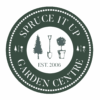Tree Shaping by Certified Arborists In Calgary
If your tree is growing wild in all directions, leaning awkwardly, or looking a little lopsided, it might be time for professional tree shaping.
At Spruce It Up Garden Centre, our certified arborists know how to shape your trees the right way — so they stay strong, grow healthy, and look amazing year-round.
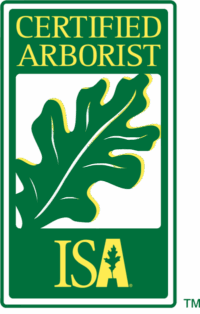
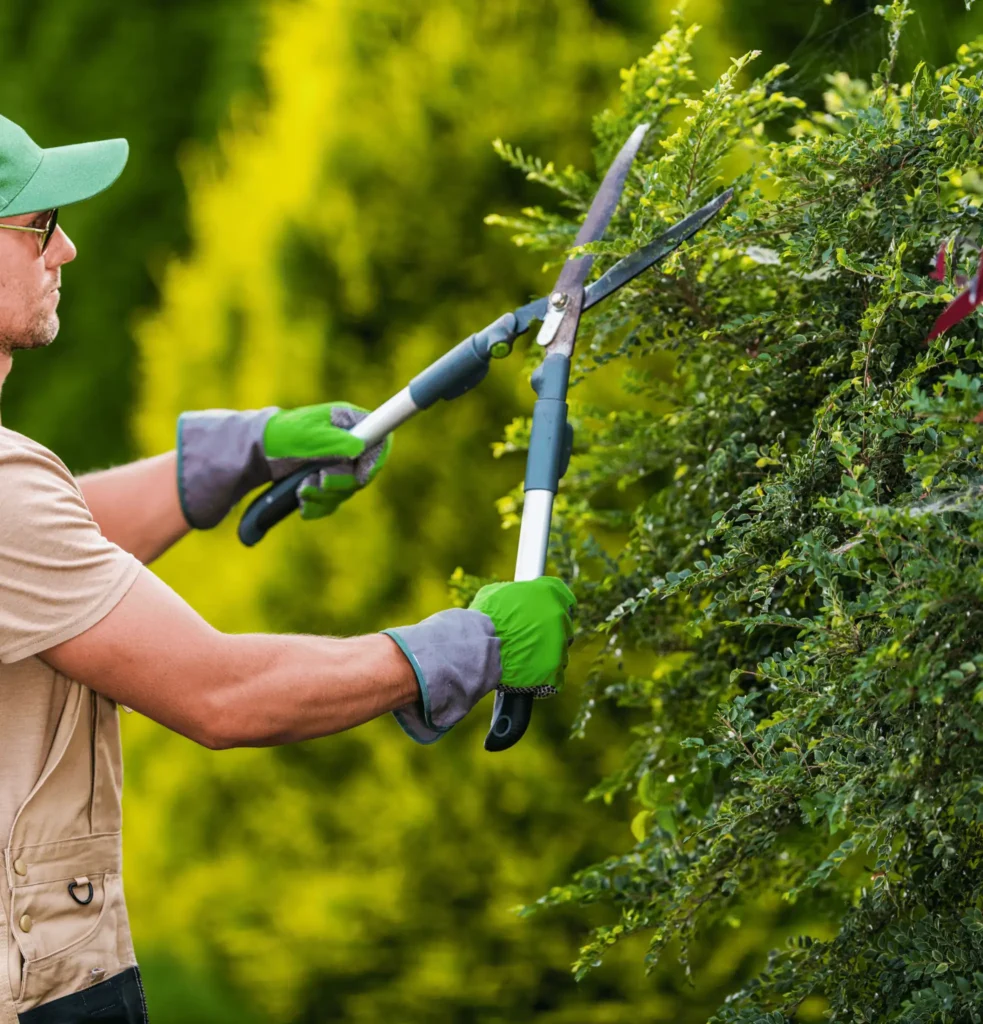
Signs Your Tree Needs Shaping
-
Your tree growing unevenly or leaning to one side
-
Your tree branches are crossing, rubbing, or growing in strange directions
-
Your tree looks bulky or messy, even after pruning
-
Your tree start blocking sunlight from parts of your yard
-
You just want your tree to look neater and more balanced
Our Prune It Up Team In Action!
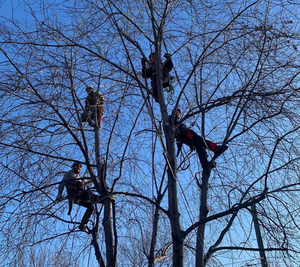
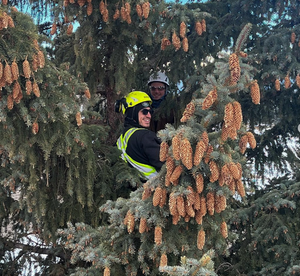
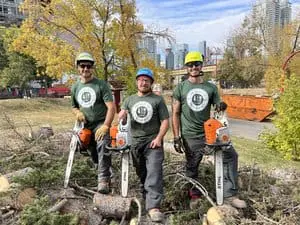
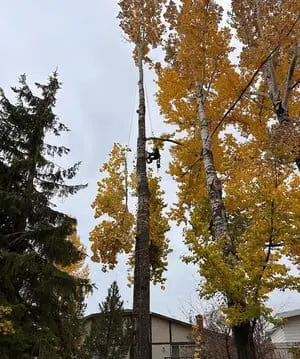
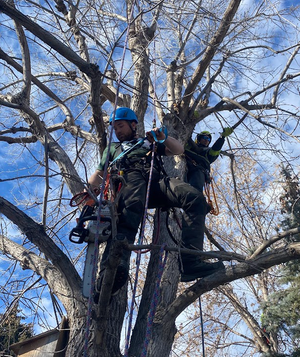
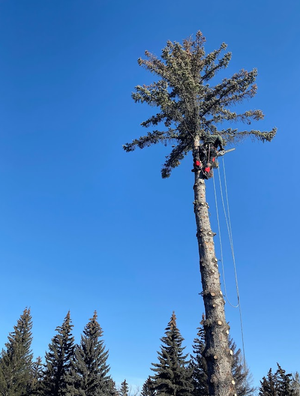
Request a FREE Estimate!
Your Questions, Answered
When is the best time to prune trees?
Ideally the best time to prune trees is in the early spring or fall, but most trees can be pruned at any time during the year. There are a few exceptions to this. Maples and Birch trees need to be pruned when they are in full leaf, so late spring through summer and Elm trees can only be pruned Oct 1-March 31 due to a pruning ban to help control the spread of Dutch elm disease.
How often should your trees be pruned?
Deciduous trees should be pruned every 2-3 years. Evergreens should be pruned every 2-3 years and full deadwood removal should be done every 5-7 years.
When should your tree be treated for Birch leaf miner?
Timing is important. We have a 2-week window at the end of May, beginning of June where we treat birch leaf miner. This is when the larvae are hatching and are at their weakest as they will die when they start to eat the leaves of a treated tree. Book in early!
Do we service outside the City of Calgary?
Yes, we have serviced clients as far out as Carstairs to the north, Canmore to the west, Nanton to the south, and Cluny to the east. Out of city service includes travel one way to site and an hourly rate for time on site and cleanup. A consultation and walkthrough are done on the day of service with an ISA Certified Arborist before work begins.
Can I trim my neighbor’s tree that hangs over the property line?
In Calgary you have the right to trim branches that overhang onto your property, as long as you don’t cause significant damage to the tree or cross onto your neighbor’s property to do so. You could be held liable for damages if your actions cause the tree to die or become unstable. We always recommend communicating with your neighbor first to seek consent and find a mutually agreeable solution.
What’s the best way to water my trees?
Trees should start being watered as soon as there is no snow in the spring until the ground freezes in the fall. In Calgary, water trees planted in the last three years weekly, and trees planted more than three years ago every two weeks. Water the soil, not the leaves, at the root zone, which is the area under the drip line of the tree. Water deeply, not frequently, to a depth of 10–30 inches. Water slowly so that the water doesn't run off with a slow trickle or soaker hose. Water early in the morning to reduce water loss from evaporation and wind. In the extreme heat of summer trees may need to be watered more frequently. Check the soil around the tree to determine if the soil is dry and may need additional watering to deal with the heat.
Do I need to stump grind? What is the difference between stump grinding and stump removal?
Yes, you should consider stump grinding if you want to remove a tree stump from your yard, as it can help prevent pests, reduce the risk of tripping, and make your yard look better:
- Pests: A stump that's left to rot can attract pests like termites and carpenter ants, which can then spread to other plants and trees in your yard or even get into your home.
- Safety: A stump can be a tripping hazard, especially for kids. Mowing equipment can also be damaged if a stump is accidentally run over.
- Aesthetics: A stump can be an eyesore and reduce your home's curb appeal and property value.
Stump grinding grinds a stump down 6-8” below grade leaving a hole with mulch that can be filled in so the area can be easily relandscaped. The remaining stump and roots with begin to decay underground on their own over time. Stump removal removes the entire stump and surrounding roots from the ground so that there is nothing left in the ground.
Can I plant a tree in the same spot as where I removed a tree?
Yes, you can, but you must do a full root removal in order to plant a tree in the same space. We do recommend planting a new tree a few feet away from where the tree was removed as then the new tree has fresh soil with proper nutrients and you don’t have to worry about any remaining roots.
What are the most common pests and diseases in the Calgary area?
- Black Knot Fungus: A fungal disease that causes abnormal bark growths around branches, affecting choke cherry and mayday trees
- Fire Blight: A bacterial disease that infects trees and shrubs in the rose family, such as crabapple, apple, mountain ash, hawthorn, cotoneaster, raspberry, and saskatoon. Leaves turn brown and crispy and spreads quickly during summer months. Fire blight can infect and kill an entire tree in one season.
- Leaf Miners: Tiny sawflies, jet-black, wasp-like insects, that lay their eggs in the leaves. The larvae caterpillars feed on the inside of the leaf tissue, leaving the characteristic skeletonized, brown, patchy leaf. While leaf miners generally do not kill the tree, they weaken it, leaving it stressed and open to attack by other insects.
- Poplar Borer: Borer larvae may feed on the interior of the tree for two or more years before pupating and emerging as adults. During the larval stage, borers cause significant health and structural damage to Swedish columnar aspens and trembling aspens, shortening the lifespan of the tree.
- Elm Scale: Tiny crawling insects that affect leaves, twigs, and branches on elm trees as the insect feeds. Twigs and branches can appear blackened, the leaves and buds are often smaller than normal, and within one to two years after infestation, small branches begin to die.
- Oystershell Scale: Small clusters of oyster-shaped “shells” that cover bark. A serious ornamental pest of southern Alberta, attacking cotoneaster hedges, apple, crabapples, hawthorn, mountain ash, green ash and many others. Scale insects damage plants by feeding on sap.
- Aphids: small pear-shaped insects that feed on plant sap, weakening the tree. Honeydew is the sugary waste product of aphids which attract ants and wasps. Some species cause the leaves to curl and can be difficult to control.
- Spruce Budworm: Spruce budworms eat needles, buds, and cones, starting at the top of the tree and moving down. This can lead to complete defoliation, especially in the upper crown.
Why are my spruce needles turning brown in fall?
Spruce trees shed needles as part of their natural growth cycle. This is called seasonal needle loss. In fall needles turn yellow or brown and drop off in the fall. This can start in early August and continue until the first freeze. Drought and heat stress can escalate this process.
Does topping hurt your trees?
Yes, topping trees is harmful and can cause irreparable damage. Topping is a pruning method that involves cutting off the top of a tree's branches, leaving large stubs.
Why topping is harmful:
- Decay: Topping creates wounds that can lead to decay, disease, and insect infestation.
- Weak limbs: Topping can cause new branches to grow quickly but weakly, making them more likely to break in storms.
- Sunburn: Topping removes leaves that absorb sunlight, exposing the remaining branches to more heat and light. This can cause sunburn, which can lead to bark splitting and branch death.
- Top-heavy: Topping can make a tree top-heavy, making it more likely to be blown over by the wind.
- Photosynthesis: Topping removes leaves, which reduces the tree's ability to photosynthesize and produce food.




